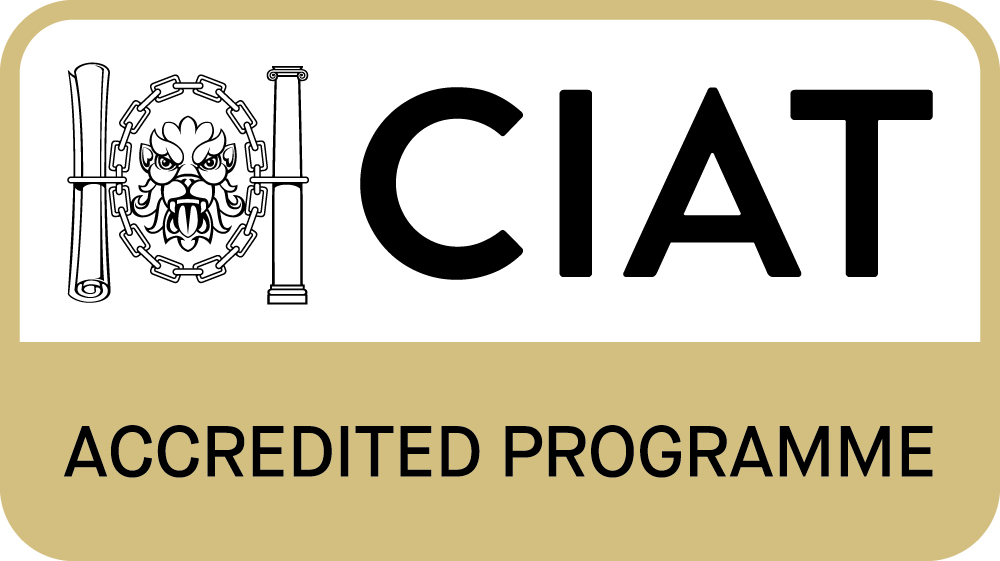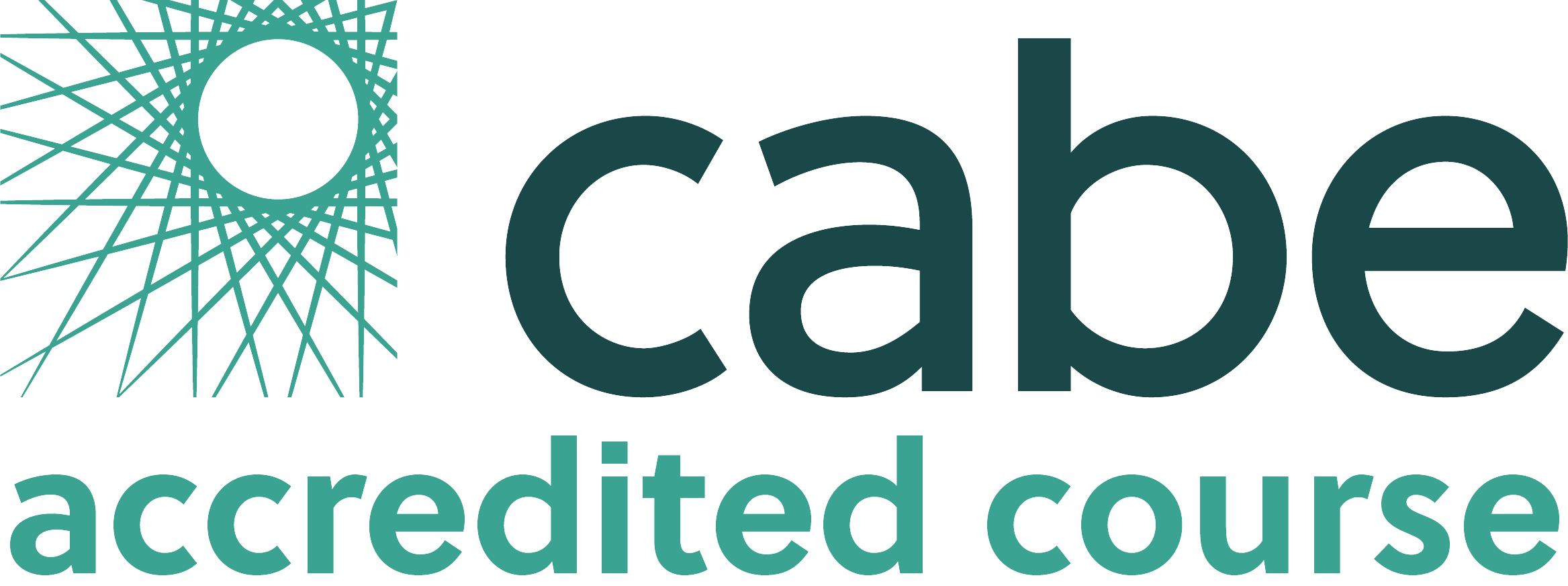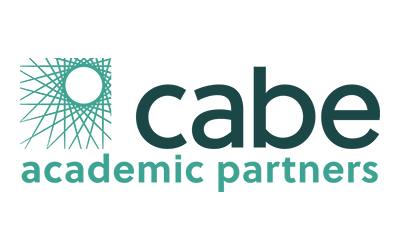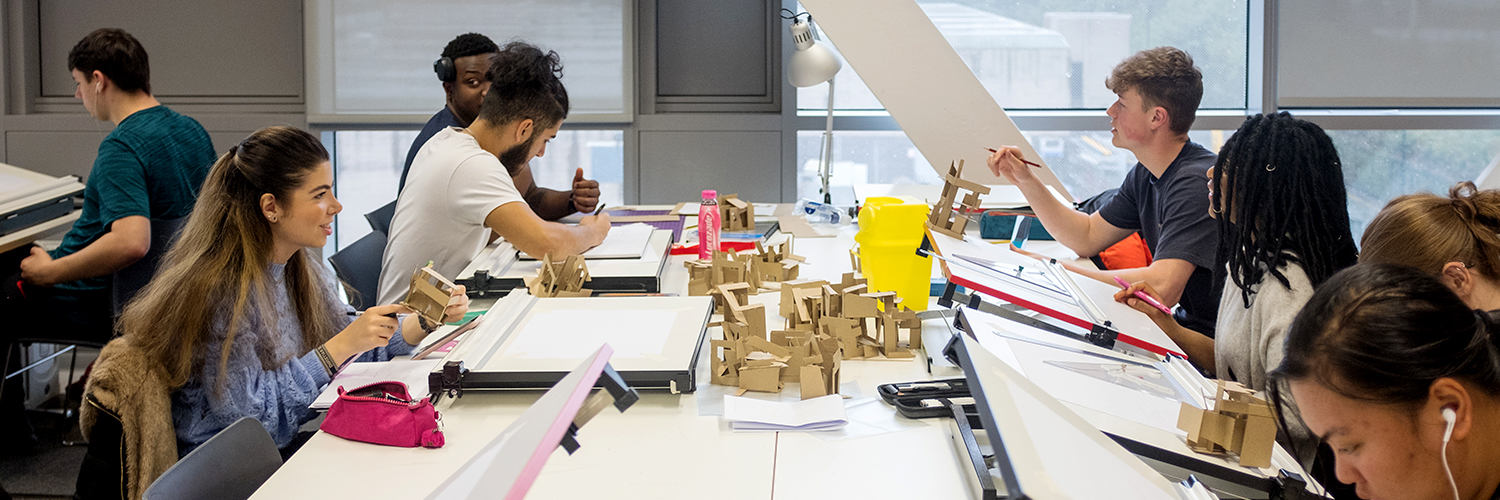Architectural Design and Technology
Full-time
With placement
Three year
Four year
September 2025
In a nutshell
Behind every grand design is great technique. In our increasingly digital-driven built environment, our Architectural Design and Technology degree is a route to a rewarding career where you can make amazing design concepts a reality.
By applying high-level design skills and sophisticated software applications, architectural technologists carry a concept through to its final design. Drawing on our strong industry connections and competencies, our Chartered Institute of Architectural Technologists (CIAT) and Chartered Association of Building Engineers (CABE) accredited course will lead you through the technical, operational and environmental details of building creation.
During your studies, you'll build BIM and CAD design skills, work on live briefs, learn to manage design information, and appreciate the value of robust design in transforming our built environment.
Start your study journey
Register for our next Open Day to learn more about studying Architectural Design and Technology, explore our facilities and meet the course team
You will:
- Explore digital technologies shaping the profession, as you gain hands-on experience using key equipment and software packages used by industry professionals
- Enhance your knowledge and eye for good design as you build an awareness of materials, industry regulations, contemporary production methods and end-user requirements
- Examine the role of nature, people and technology in design, and the physical, legal, economic, social and environmental dimensions that impact on the building design process
- Develop key skills in project appraisal, team working, critical analysis and problem solving as you prepare for a professional career role
options available
students accepted
Course accreditations



01
04
This is for you if...
You're a creative, original thinker, looking to develop technical skills to work in a recognised profession
You're fascinated by the design of building and want to build a future career in this field
You're looking for a creative degree course that combines science, technology and design
All about the course
Course delivery
This degree is a route to a rewarding career where you can turn innovative design concepts into reality. Delivered full-time over three years, you will follow a carefully designed suite of modules to develop your technical skills and build your theoretical knowledge. You will study architectural theory alongside practical design projects, delivered in a collaborative studio culture that reflects how contemporary architecture firms work.
From our location at the heart of Greater Manchester, our expert academic team draw on close industry partnerships with architecture, engineering and construction sectors, to bring you guest lectures, networking opportunities and local architectural projects that will support your knowledge and skill progression.
Learning experience
We've developed a curriculum that will steadily build your knowledge. Year one modules will introduce you to the architectural design processes. As you progress into year two, you’ll begin to use advanced software packages, manage design information, and develop design skills. In your final year, you’ll continue to develop a design portfolio and complete a final project of your choice where you can interact with industry experts. Learn more about the course modules in the section below.
Based at our green Peel Park campus, you will thrive in our dynamic studio environment. There’ll be plenty of opportunities to tackle real life creative project briefs, sketch ideas and make models, and visit impressive local architecture. As a architectural technology student at Salford, you’ll also showcase your design skills at our annual degree show.
Industry placement
On this course, you will have the option to take an industry placement between years two and three. Although you will be responsible for securing your own placement, our tutors will support you all the way, from helping you to apply to providing support while you are on your placement.
Introduction into Law and Regulatory Framework
You will be introduced to English Law and relevant statutory requirements for studying for vocational qualifications in the construction and property professions. You will e-learn about the workings of the English legal system, to the law relating to contracts and to the regulatory framework affecting the use, management and development of land, in particular, planning, building control and the CDM regulations.
Principles of Architectural Structure
This module aims at providing a fundamental understanding of the design principles and behaviours of structural forms, elements and systems in buildings. You will be introduced to nature as a generator of structure. You'll explore the relationship between shape, material, structural performance, loads, assembly methods and construction technology through modelling, analysis, and case studies. You will be able to understand the mutual dependencies between architectural design, structural performance and manufacturing technologies in the past and present through the knowledge of historical and contemporary structural forms and materials. The module also enables you to investigate the implications of nature, people and technology in the design of architectural structures.
Architectural Representation and Modelling
This module will introduce you to Computer Aided Design, hand drawing and model making, as techniques for communicating the design and construction of buildings. You will learn how to use draughting and rendering software, the basics of Building Information Modelling, sketching, model making, and the production of scale drawings and details, by hand.
The module content is delivered in our architecture studio and workshop. Assessment will require you to submit physical models, hand drawings and computer renderings
Introduction to Architectural Design
With a focus on 'learning by doing', the module is delivered as a studio-based framework, where a series of small exercises will encourage you to add experimentation and innovation to your projects. You will complete a design project, which combines guided learning/tutorial and independent study. The outcome of the project will vary depending on the purpose of the design brief. We will also use the Virtual Learning Environment (VLE) to enhance your learning experience.
A range of assessment methods will provide you with the opportunity to demonstrate your skills. This will include summative assessment of the projects based on the predefined criteria and formative assessment through design critic.
Architectural Design for Construction 1
This module will introduce you to construction technology, and how this is described, detailed, and specified as part of the architectural design process. Using the domestic house as a framework, module lectures start from the bottom-up covering foundation and ground slab design, and progress to explore wall, roof, stairs, windows, and doors, first floor construction, plus internal elements in terms of forms of construction, materials and performance.
The module is delivered using lectures and seminars, and is assessed using coursework that will include detailed drawings, specifications, and detail models.
Environmental Science and Services
Environmental Science and Services aims to develop a knowledge and understanding of the theoretical and design principles of how the structural elements of a building interact with the engineering services to provide a holistic product that provides a safe and sustainable environment with suitable levels of occupant comfort.
History of Architecture and Construction (ADT)
Explore the history of architecture and construction. This module provides insight into historic construction, along with an understanding of how ideas and technology have changed and continue to change the design of buildings. The module narrative starts in Salford at the beginning of the 19th Century with the ‘shock city’ of the Industrial Revolution, and moves through 20th century modernism, to cover emerging 21st century ideas of sustainability, ecological design, and off-site manufacturing. Having this contextual knowledge will give you a greater understanding when working with, or integrating into, a historic environment, how conservation and re-use can be informed by an understanding of architectural history. It will also provide insight into how technology and ideas develop.
We deliver the module using lectures and seminars, and use a final essay for assessment. In this module, we will also introduce library skills in research and referencing (delivered by the University’s library team).
Design and Construction Management (ADT)
A fundamental element of an Architectural Technologist’s role is to communicate the building design and construction information in specifications, schedules, drawings and contract documents. In this module, We will teach you specification writing using the National Building Specification (NBS), and material and component specification using reference to British Standards, Codes of Practice, and BREEAM Certification. We will also explore software for preparing design and construction programmes, and the use of BIM in preparing construction contract packages.
The module is delivered using lectures, seminars, and software demonstration. You will be assessed through a design report that will include all aspects of construction documentation– specification, programme, contract documents and Health and Safety – in a design project.
Architectural Design for Construction 2
Building on your knowledge and skills, this module will further develop your understanding of technological innovation in architecture integrating the parallel strands. You will consider more advanced construction techniques, systems and assemblies for non-domestic buildings. Through this, you will extend and develop your technical vocabulary and grasp of building physics for more complex building forms in terms of scale, storeys, and medium and long clear spans.
Procurement and Administration
This module enables you to explore and differentiate the principal types of procurement systems and associated contracts used in the UK, you will also explore the fundamental procedures related to contract administration.
Architectural Design for Urban Development
This module focuses on development in urban settings, dealing particularly with the options for in-fill sites where a new building is created between existing buildings and structures. The challenges you will explore include how to plan a project in a busy location, how to deliver a sustainable project and how to detail this design within the appropriate legislation and regulations associated with the building type you choose.
Practice 2: Multidisciplinary Project
The multidisciplinary module allows you to engage in a multidisciplinary practice-based environment and gain an insight into industrial practice. Utilising a real-world scenario student’s work collectively and collaboratively to communicate a project solution to a panel of assessors through varying forms of media. This module is supported with a series of industrial guest speakers to offer real life practices, procedures, technologies, and communication techniques.
Environmental Architectural Technology
You will develop an holistic understanding of tectonics for local and global environmental challenges. You will assess the impacts of building performance on the built environment. You'll apply the principles of technological engineering systems in sustainable design and construction processes to a design solution. You will also apply technical regulatory factors that impact build, sustainability and environmental performance within broad societal concerns.
Discipline Research Project
You will learn to write and deliver an extended and coherent study on a design related topic. On completion, you will demonstrate competency in research skills in support of future learning development. This module will help you to develop the skills of reflective practice through engagement with contemporary architecture and urbanism.
Integrated Architectural Design and Practice
This module incorporates the final design project of the course - an opportunity to pull together and demonstrate all the skills and knowledge you have acquired in a single medium sized project with a brief and site of your own choosing. The assessment will require the submission of a comprehensive package of design and construction information including a physical and historic site analysis; a brief; plans, sections, elevations, selected details, and renderings of the proposed building and site context (including a physical/computer model of the building).
Sustainable Conservation and Reuse of Buildings
Delivered using our design studio, in this module, you will prepare a design for the conversion of an existing building (on the University Campus), including a measured and condition survey of the building. The module is taught in the design studio. You will be assessed through a design project which includes a brief for the project, together with plans, sections, elevations, selected details, and renderings. of the building as existing and as proposed. You will also complete a design report describing how the building performance will be improved whilst preserving the historic aspects of the building.
Modern Methods of Construction
This module provides you with knowledge of Modern Methods of Construction (MMC) and an introduction to a range of MMC techniques. Through a focused series of lectures, we will reveal the role of offsite manufacture, platform thinking, generative design, robotics, intelligent building, kinetic architecture, logistics and sustainable considerations.
Building Performance Modelling
In this module, you will use an existing model of a proposed medium-sized building to undertake a range of performance evaluation and provide an illustrative report about how the building performance maybe improved. Delivered using our architectural design studio, the module activities will help you to become aware of the current range of performance modelling analytical tools.
Please note that it may not be possible to deliver the full list of options every year as this will depend on factors such as how many students choose a particular option. Exact modules may also vary in order to keep content current. When accepting your offer of a place to study on this programme, you should be aware that not all optional modules will be running each year. Your tutor will be able to advise you as to the available options on or before the start of the programme. Whilst the University tries to ensure that you are able to undertake your preferred options, it cannot guarantee this.
Frequently asked questions
What is Architectural Design and Technology?
Architectural Design & Technology is a key part of architecture, especially pre-construction processes. This field focuses on the automation and augmentation of the design process to ensure high-performance of materials, systems, and structures.
What’s the difference between architecture and architectural design and technology?
Architecture is the wider definition for the construction of structures while architectural design and technology focuses on the pre-construction design processes. This field specifically focuses on the use of CAD (computer-aided design) to improve these processes.
Is it hard to study architectural design and technology?
Like many architecture programmes, studying Architectural Design and Technology can be challenging since it involves many practical aspects and tasks, however, our students find our programmes incredibly rewarding when gaining a wide range of skills during their studies.
There are methods to ensure you’re getting the best of your degree, including practicing good time management and making time for yourself to recharge. If you find your studies overwhelming, there will be support available from your lecturers and university support staff.
What GCSEs and A Levels do you need for architectural design and technology?
Most of our Architecture programmes require GCSE English Language and Mathematics at grade C/Level 4 or above and a certain number of UCAS points. The specific entry requirements for this programme can be found in the entry requirements section.
How long does it take to become an architectural technologist?
Our Architecture programmes are delivered on a full-time basis over 3 years (or 4 if a placement year is chosen). Most of our programmes also offer an added foundation year, taking your studies up to 4 years but requiring more relaxed entry requirements. Graduating from a Chartered Institute of Architectural Technologists accredited course means you have met the education requirements to progress, with several years of further relevant industry experience to become a Chartered Architectural Technologist (MCIAT), a protected title like that of a Registered Architect.
School of Science, Engineering and Environment
Rising to the challenge of a changing world, our degree courses are designed to shape the next generation of urbanists, scientists, engineers and industry leaders.
Driven by industry, and delivered by supportive programme teams, you can develop the knowledge and skills to become unstoppable in your career.
Facilities
As an Architectural Design and Technology student, you will learn in our specialist architectural design studios based in Maxwell building provide an inspiring environment to develop ideas, work collaboratively and share best practice.
You will also have access to workshops on campus which house high specification equipment, including laser cutters and 3-D printers, to help you bring your ideas and concepts to life.
Industry collaboration and research
When you start this degree with Salford, you are also joining a community making a difference in industry, our local region and in our wider society.
Many of our academics and technicians who support your course also deliver collaborative, interdisciplinary, high-impact work in a range of local and global built environment issues and challenges.
Discover how you are part of something bigger.
What about after uni?
Employment
This course will help you to develop a range of personal and professional skills and competencies that can make you highly employable. These skills include report writing and presenting complex information, design software proficiency, teamwork and project management.
Architectural technologists, and software management skills they possess, are highly-sought by industry, both in the UK and overseas. By successfully completing our degree, you will graduate with exciting career opportunities ahead of you.
As an architectural design and technology graduate, you will be well-placed to apply for graduate design-based roles. Salford's architecture alumni have progressed to work with regional and international design firms, government organisations and consultancy practices such as MHA Architects, Walker Simpson Architects, and Mason Gillibrand Architects.
Further study
You might find you want to learn more about the built environment. We offer a range of specialism postgraduate study options to help you take your career and interests even further. Salford graduates and alumni also receive a significant fees discount.
- MSc Project Management in Construction
- MSc Building Surveying
- MSc BIM and Digital Built Environments
- MSc Real Estate and Property Management
What you need to know
Applicant profile
In addition to our academic entry requirements, we also look for certain characteristics in each applicant. Having these characteristics will not only help you to fulfil your academic potential, but they are also essential if you want a successful built environment career.
English language requirements
All of our courses are taught and assessed in English. If English is not your first language, you must meet our minimum English language entry requirements. An IELTS score of 6.0 (no element below 5.5) is proof of this, and we also accept a range of equivalent qualifications.
Read more about our English language requirements, including information about pathways that can help you gain entry on to our degree courses. If you do not have the English language requirements, you could take our Pre-Sessional English course to gain entry onto this degree.
GCSE
English Language and Mathematics at grade C/level 4 or above (or equivalent). You must fulfil our GCSE entry requirements as well as one of the requirements listed below.
UCAS tariff points
104 points
A Level
104 points
BTEC National Diploma
National Diploma DMM
BTEC Higher National Diploma
Higher National Diploma Pass in a related subject for entry to level 5. Related subjects include Architecture, Construction, Civil Engineering, Building Studies and Estate Management.
T level
T level is accepted. You will need 120 UCAS points from any subject.
Foundation Degree
Pass in a related subject for entry to level 5. Related subjects include Architecture, Construction, Civil Engineering, Building Studies and Estate Management.
Access to HE
104 points
Scottish Highers
Please contact Admissions for further information.
Irish Leaving Certificate
Please contact Admissions for further information.
European Baccalaureate
Please contact admissions for further information.
International Baccalaureate
28 points
Other Qualification
Degree in a related subject for entry to level 5. Related subjects include Architecture, Construction, Civil Engineering, Building Studies and Estate Management.
International students
We accept qualifications from all around the world. Find your country to see a full list of entry requirements.
Salford Alternative Entry Scheme
We positively welcome applications from students who may not meet the stated entry criteria but who can demonstrate their ability to pursue the course successfully. Once we receive your application, we'll assess it and recommend it for SAES if you are an eligible candidate.
There are two different routes through the Salford Alternative Entry Scheme and applicants will be directed to the one appropriate for their course. Assessment will either be through a review of prior learning or through a formal test.
Please contact Admissions for further information.
How Much?
Your tuition fees are regulated by the UK government who has proposed changes to tuition fees for UK students studying in England from 1 August 2025. The fee stated reflects this proposed change, but remains subject to parliamentary approval. Your tuition fees may increase in your first and each subsequent year of your programme to the maximum amount permitted by UK law or regulation for that academic year.
| Type of study | Year | Fees |
|---|---|---|
| Full-time home | 2025/26 | £9,535 per year |
| Full-time international | 2025/26 | £17,650 per year |
Additional costs
You should consider further costs which may include books, stationery, printing, binding and general subsistence on trips and visits.
International student scholarships
If you are a high-achieving international student, you may be eligible for one of our scholarships.
Learn more about our latest international scholarships.



